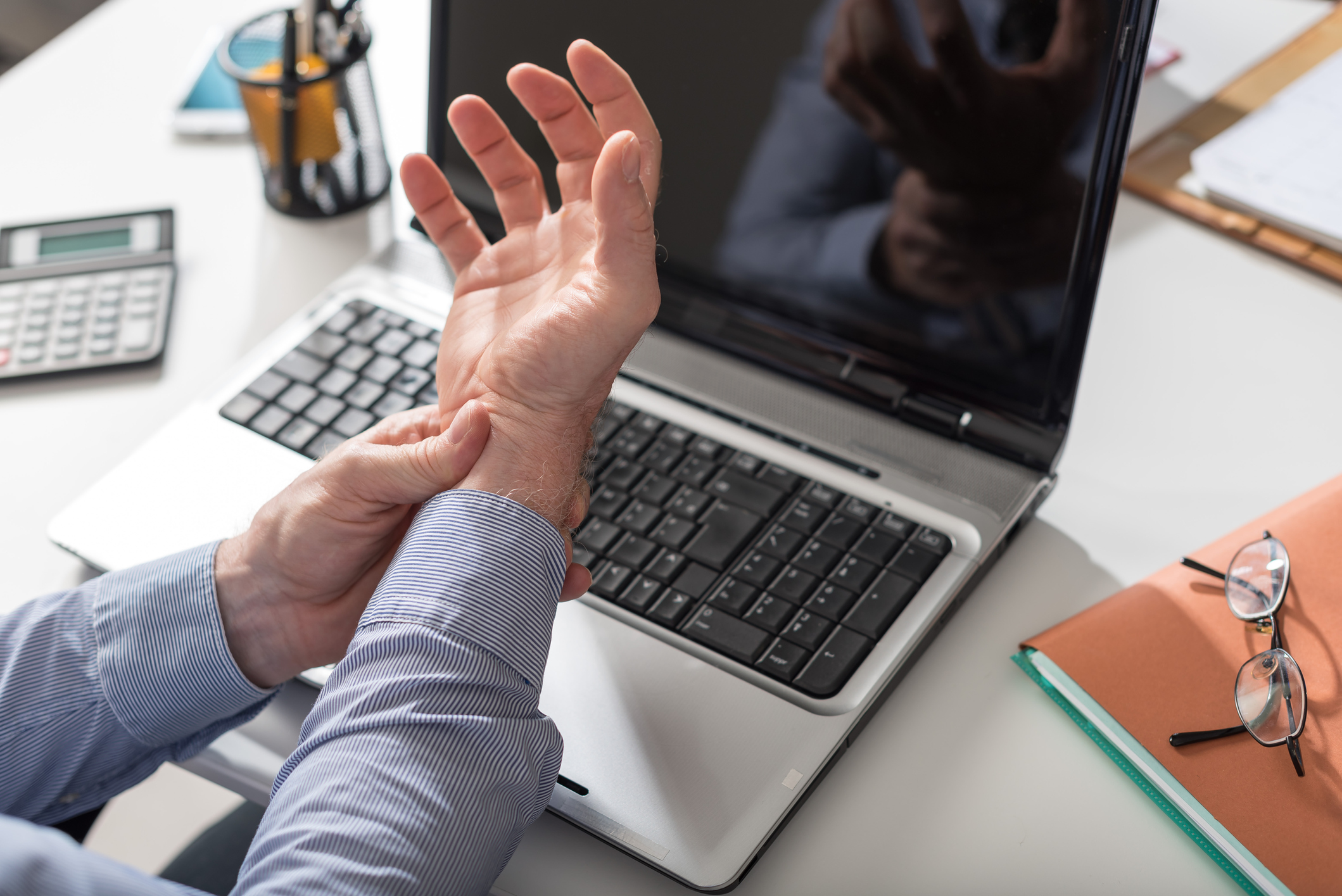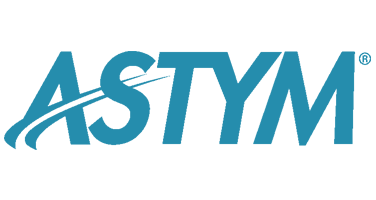
29 Nov Carpal Tunnel Syndrome — Advice From The Experts
If you experience wrist and hand pain with numbness or tingling into your hand you may have carpal tunnel syndrome. Other common symptoms include weakness in the thumb muscles, loss of hand motion and increased pain at night. Carpal tunnel syndrome affects 2-5% of the population and most commonly affects individuals between the ages of 40-60. It frequently affects individuals whose occupations require the wrist to be flexed or extended for long periods of time, such as jobs that require computer work. Also, repetitive motion or gripping activities and exposure to repetitive vibrations such as power tools can contribute to carpal tunnel syndrome. If you suspect that you have carpal tunnel syndrome, you should see a doctor to be properly diagnosed and explore treatment options.
Common treatments for carpel tunnel syndrome include rest, anti-inflammatory medication, night splints to immobilize the wrist, physical therapy, and steroid injections. If these options fail, surgery may be recommended. Although carpal tunnel syndrome is caused by increased pressure on the median nerve which travels through the carpel tunnel at the wrist, it is important to remember that the median nerve originates in the neck and the neck must be addressed when treating carpal tunnel syndrome. While 14% of individuals with carpal tunnel syndrome have neck pain, neck pain does not need to be present in order for the neck to be a contributing factor to symptoms. The key point is to treat the upper extremity nerve and muscle system and not simply focus on the location of pain. In the case of carpel tunnel syndrome, this means treating the upper back, neck, and the course of the nerve (from the neck down to the shoulder, elbow, wrist, and hand). Even if nerve testing reveals poor conduction to the median nerve at the carpal tunnel, this can frequently be improved by treating the entire nerve and muscle system in the involved arm, which can often help avoid the need for surgery.
A thorough examination by your physical therapist will help you determine the best conservative treatment options for you. This treatment will frequently include gentle spinal manipulation of the upper back and neck, nerve sliding/gliding exercises to treat the nerve from your neck to your hand, and “hands-on” techniques to mobilize the bones of the wrist and hand. Tight bands or knots called trigger points are commonly found in the muscles of the forearm and the muscles around the upper back and neck in patients with carpal tunnel syndrome. These can be treated with trigger point dry needling or massage.
The repetitive motions or stress associated with carpal tunnel syndrome can also cause tightness and possible degeneration in the soft tissues (muscles, tendons, and ligaments) around the carpal tunnel. Astym treatment can help relieve this stiffness and regenerate the soft tissues.
Finally, poor posture will place increased stress on the nerves coming out from the neck and going to the hand. Maintaining good posture and taking frequent breaks when working at your computer will help alleviate this stress. Also, having the proper ergonomic set up at your computer to minimize stress on the neck, upper back, and wrists will also reduce your chances of experiencing carpal tunnel symptoms.
If you suffer from carpal tunnel syndrome, it is important to treat the body as a system and not simply focus on the carpal tunnel. Just because your pain may only be in your wrist or hand does not mean that the source of all your symptoms is in the wrist and hand. Your upper back and neck are likely contributing factors and should be treated along with the hand and wrist. A comprehensive conservative treatment program addressing all contributing factors will help you avoid more aggressive and costly procedures such as surgery.
Meet today’s guest bloggers:

Dr. Timothy W. Flynn, PT, PhD
Dr. Flynn is board certified in Orthopaedic Physical Therapy (OCS), a Fellow of the American Academy of Orthopaedic Manual Physical Therapists (FAAOMPT), and a frequent research presenter at state, national, and international meetings. Dr. Flynn is widely published including 5 textbooks, 6 book chapters, over 50 peer-reviewed manuscripts on orthopaedics, biomechanics, and manual therapy issues. He was the editor and author of The Thoracic Spine and Ribcage – Musculoskeletal Evaluation & Treatment and The Users’ Guides to the Musculoskeletal Examination, and the author of 3 educational CD-ROMs on Orthopaedic Manual Physical Therapy. Dr. Flynn has received numerous research grants. Awards include the James A. Gould Excellence in Teaching Orthopaedic Physical Therapy, the Steven J. Rose Excellence in Research (twice), the AAOMPT Outstanding Research Award (twice), and the Distinguished Alumnus- Marquette University Program in Physical Therapy. Dr. Flynn continues to maintain an active research agenda in the areas of spinal and extremity manipulation, low back disorders, characterization of spinal instability, and the development of clinical prediction rules.
Dr. Flynn is an expert clinician who is dedicated to providing the highest quality care possible. His primary clientele is made up of individuals suffering from low back pain, chronic spinal disorders, failed back surgeries, and chronic pain disorders. Dr. Flynn’s clinical expertise is frequently sought by national and international clients. He is on the executive board of Evidence in Motion an education and practice consultation company which passionately promotes a culture of evidence-based practice within the physical therapy profession. Dr. Flynn is the immediate past President of the American Academy of Orthopaedic Manual Physical Therapists, an Associate Editor for the Journal of Orthopaedic & Sports Physical Therapy (JOSPT), and editorial board member of Manual Therapy. He is a Distinguished Professor of Physical Therapy at Rocky Mountain University of Health Professions where he teaches professional and post-professional students in the area of musculoskeletal management, advanced manipulation skills, and evidence-based practice.

Dr. Terry Gebhardt, PT, DPT
Dr. Gebhardt completed his Master of Physical Therapy at the U.S. Army-Baylor University Graduate Program in 1998. During Dr. Gebhardt’s 7 years of physical therapy practice in the Army he specialized in treating a broad range of musculoskeletal injuries. He has worked extensively with injury prevention initiatives and has been a leader in the development of training programs designed to maximize fitness while preventing injury. Dr. Gebhardt relocated to Colorado in 2004 to complete his Doctorate of Physical Therapy degree and Fellowship in Manual Therapy at Regis University. His areas of clinical expertise and interest include spine and sports rehabilitation where he incorporates his passion for fitness with physical therapy.
Dr. Gebhardt is an avid back country skier and ultramarathoner. He is a member of the American Physical Therapy Association (APTA), American Academy of Orthopaedic Manual Physical Therapists (AAOMPT) and a Certified Strength and Conditioning Specialist (CSCS). He has also published research in the Journal of Orthopaedic and Sports Physical Therapy and is currently active in clinical research.




